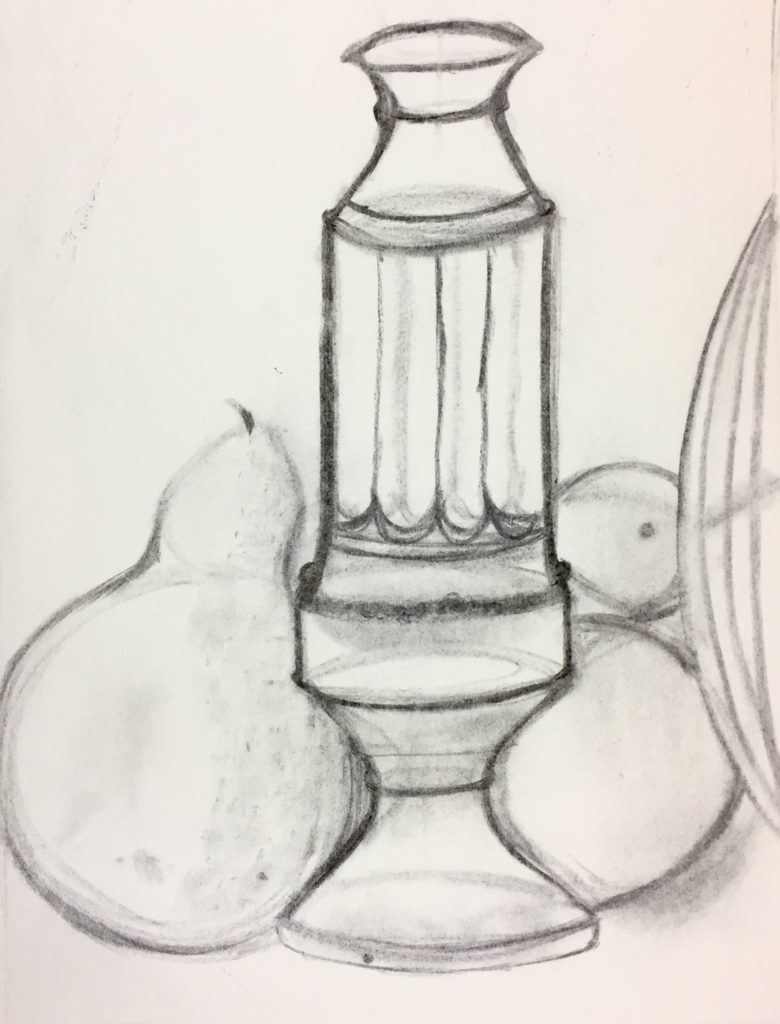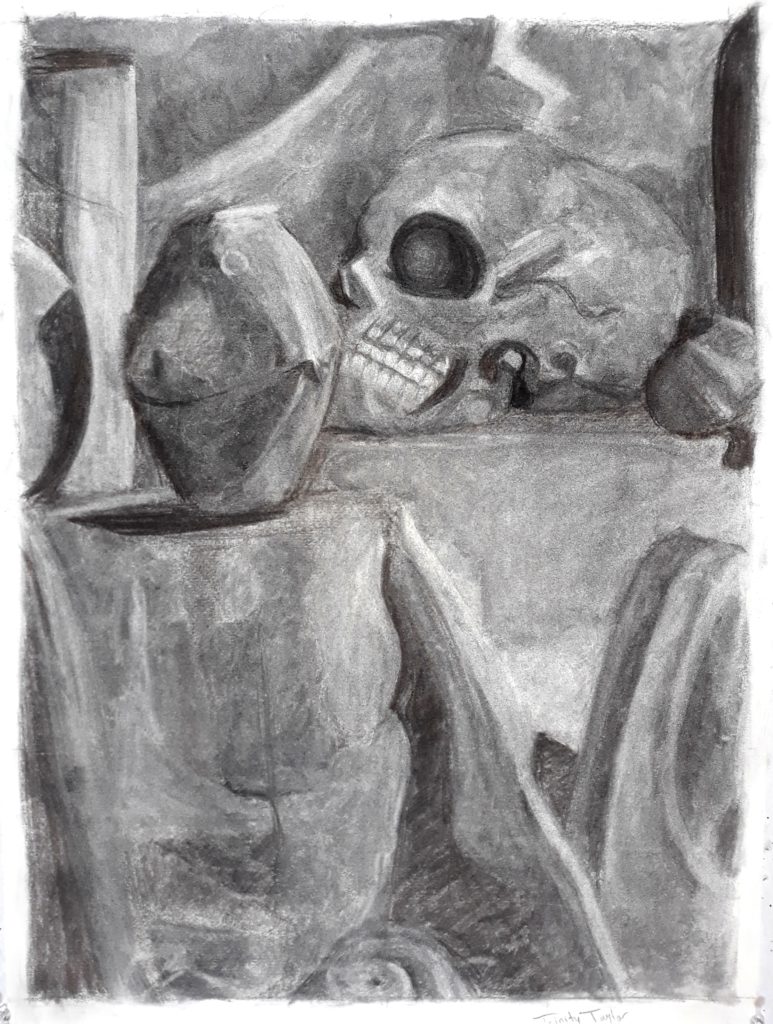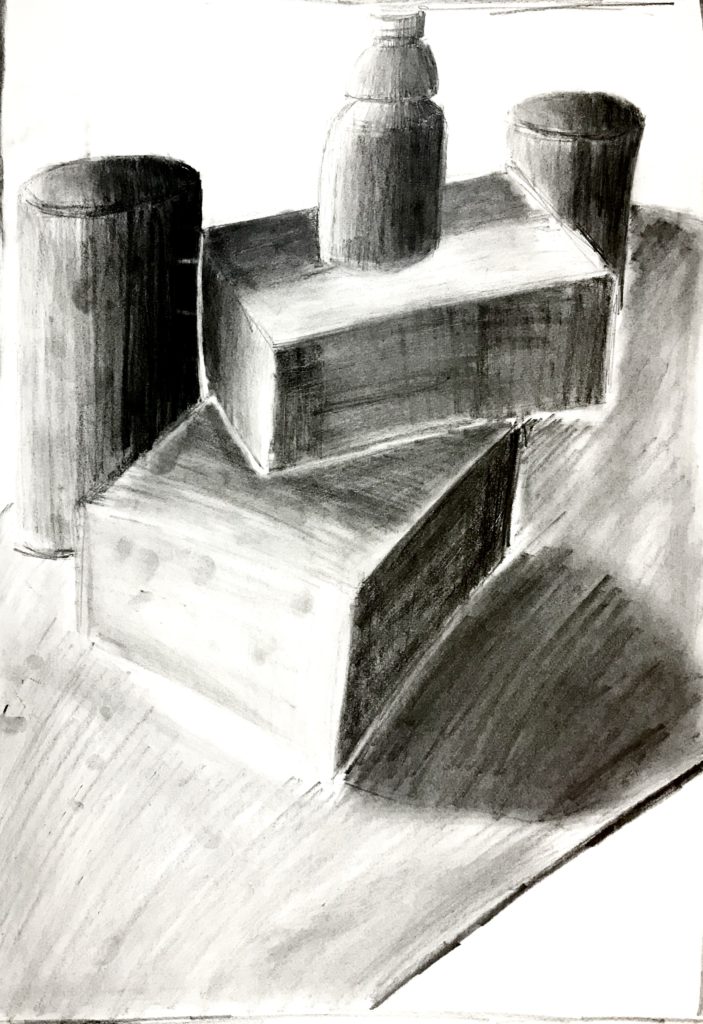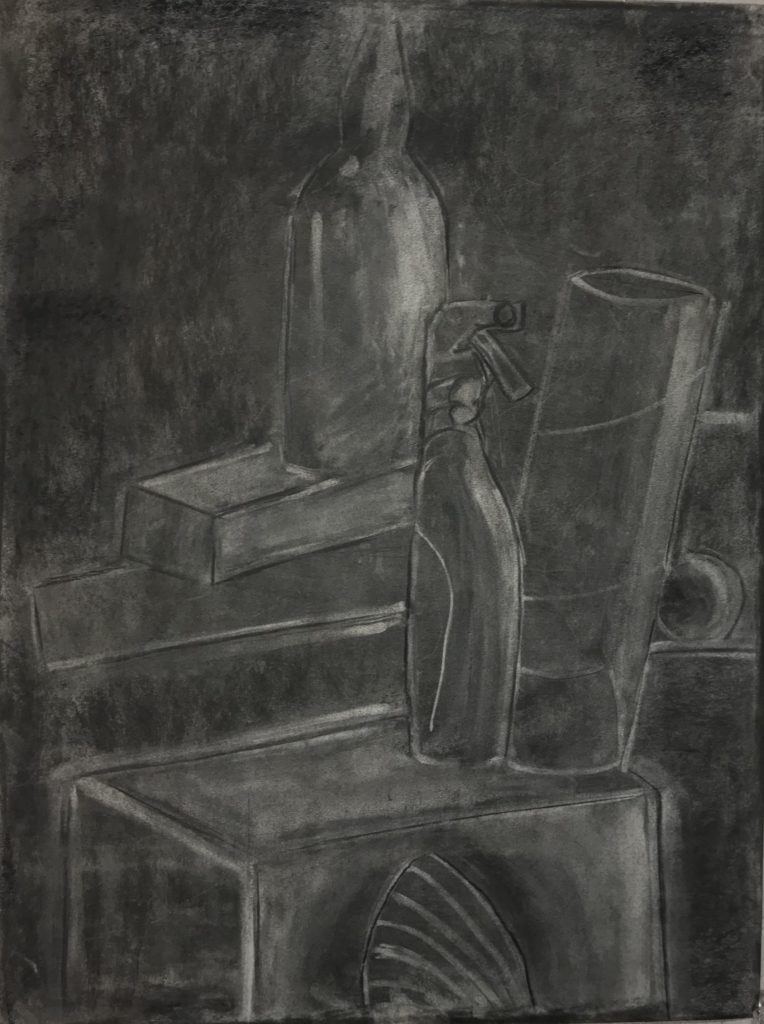This here is a still life drawing I did in my Drawing I course. Graphite was the main medium; a viewfinder was also used to make sure the objects were proportional.

I actually don’t like this one as much as my vine charcoal drawing I uploaded because I can tell some areas were rushed. The hardest thing for me was sketching things out as quickly as I could before going back and shading.









